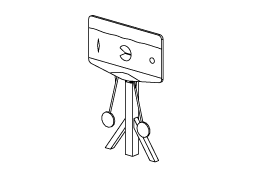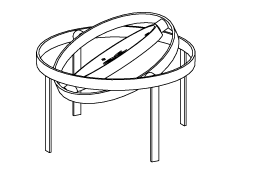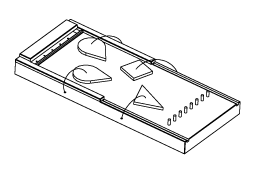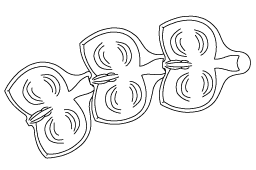 |
Pattern Board with support frame made of oak wood
Water can be found in the space within a transparent board where small particles create clear patterns. The board can be very easily set into a gentle pendulum motion due to the large, heavy counterweights. This rhythm effect causes designs to form. Water currents which collide into a wall create waves whose structure resembles sand on the bottom of the ocean. It can be clearly seen how the water flows around the obstacles and flows more quickly through the narrow canals.
|
 |
Pattern Disc
By turning this water-filled body around in various directions the flow creates fast or slow moving patterns. The gap between two transparent boards is filled with water containing tiny particles which clearly highlight the patterns. The disc can be easily and gently moved and turned in all three dimensions. The effect of the universal joint mounting is an experience in itself for many. There are four obstacles inside the disc; the liquid flows over or through them.
|
 |
Leonardo Table
In every watercourse the observer is confronted with a great variety of wave shapes, flow patterns and eddies which are often accompanied by typical water sounds. When the basic shapes meet they form a variety of wave patterns. The Leonardo Table is a polished, slightly inclined stone platter which has a thin film of water flowing over it.
|
 |
Virbela Basins
The most basic experience that we can find in water is its inner movement. The characteristic flow forms can be traced back to only a few basic patterns. Whilst working at the Institute for Flow Science of Theodor Schwenk, John Wilkes was engaged in the study of flow forms and so-called wall surfaces for flowing liquids. He discovered the phenomenon of rhythmical pulsation.
|






